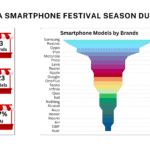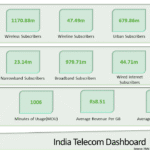Need for an omnichannel presence to grab your lions worth share
The cascading effect of the Covid-19 crisis continues to resonate across industries, even after a year the pandemic struck the world. Brands were forced to shut their traditional brick-and-mortar stores overnight and escalate their shift to e-commerce. It’s safe to say that the e-commerce industry was one of the major benefactors of the pandemic. New online businesses emerged and flourished in tandem with new consumer behavior and trends. As the dust from the pandemic starts to settle, the retail landscape is set to be transformed for good as the industry becomes a graveyard of devastated businesses. Companies with a tech-first strategy were ahead from their competitors by leaps and bounds as the nation went under lockdown.
As consumers were confined within the four walls of their homes, it did not shrink their appetite for shopping. The global eCommerce industry jumped to a whopping $26.7 trillion fuelled by Covid-19. People used this time to redecorate their homes, champion new hobbies, beauty routines, all the while splurging more on a plethora of products and services which were delivered online. Although income levels shrank across the globe, the global shopping volumes rose inversely.
Changing consumer trends and patterns became a strategic field for brands and companies to increase their sales. The 24*7 online culture gave the much-needed impetus to further grow and increase the top and bottom line. All the major e-commerce and other online retailers have been cashing in on the online opportunity but there’s a lot more to look into it besides having a myopic view on digital adoption by the masses.
The pandemic accelerated demographic disposition in major cities. People moved on to their hometowns to be close to their near and dear ones. One could see a sudden shift from the urban to semi-rural and developing cities, blurring the lines between the urban and rural world, metro and non-metro cities. This set of consumers now want to maintain the same lifestyle, irrespective of the place. Their income levels did not change and owing to the displacement, their savings have increased which tantamounts to the fact that they have more income as their disposable income. This gives an opportunity window to brands to now include their premium inventory across towns and cities to further capture the market. Consumer buying behaviors have become more erratic. A change in media consumption habits has furthered the need for at-home entertainment products. Not only this, as the festival season nears with big discounts and offers circling the eCommerce platforms, premium inventory availability across tier-II cities and beyond may become a huge impediment for brands and businesses alike. Brands need to look at an omnichannel presence with multiple consumer touchpoints to establish trust and credibility. Targeting only the digital world is no longer the way forward. In order for the consumer to experience products and services, offline strategy has to be strengthened across towns and cities. The pandemic has instilled a sense of ‘value holding’ among the consumers, and in order to capitalize on the value holding, physical presence adds to consumers’ worth. The ‘get-in-one-day’ delivery mindset is deeply embedded in the post-covid world, and with platforms unable to deliver to customer expectation will soon become redundant. That is where offline strategy in these cities comes to a brand’s rescue.
With the fear of the virus declining due to rising vaccinations, the majority of the multinationals have still extended the work from home model. People are now setting up permanent offices in their homes as they are already adapted and enjoy the luxury it offers, more and more spending on consumer durables can be expected. The post covid world will be a lot similar to what we lived before the pandemic struck. But most of the changes are there to be permanent, thus impacting the consumer spending pattern. Many companies are adapting to a hybrid model of working. Owing to this, many people are likely to move on to larger homes with adequate space for home offices in the suburbs rather than moving back to multifamily units within the city. Life in the suburbs will lead to an increase in car ownership for mobility as people will prefer to have their own vehicles instead of sharing a ride with people outside their households. Health uncertainties will still be prevalent, hence consumers will still want to cook and eat at home, thus the need for platforms to deliver premium inventory at the farthest of the locations.
Money is where people are, hence this festival season is all about brands reaching their existing consumer base and delivering to their expectations to remain relevant and enjoy customer loyalty.






One response to “What should brands look at this festival season?”
Really well thought Saloni ..
Its all about milking the same cow ..